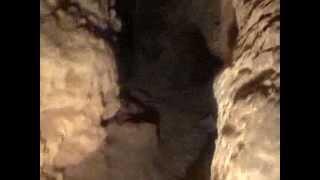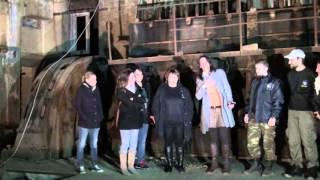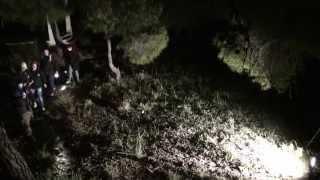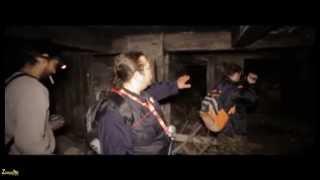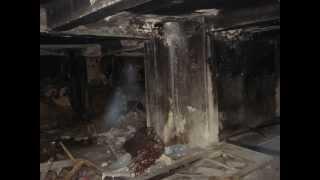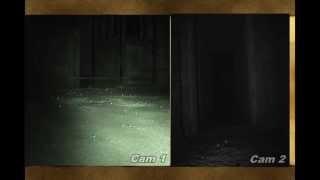The U.S. Army Garrison Fort Knox welcomes you to the BRIDGES TO THE PAST walking tour. The tour will take you along a preserved portion of the historic Louisville and Nashville (L&N) Turnpike. The tour is approximately 2 miles in length and is an easy route along a gently sloping paved road surface.
The tour passes through an area of Fort Knox that is used for military training. As a result, the turnpike is occasionally posted as Off Limits to the public. Visitors are required to remain on the paved road surface, except where walkways have been provided to allow visitors to view the bridges.
The L&N Turnpike tour features 10 points of interest. Each numbered location is described in this brochure.
The L&N Turnpike was constructed in the 1830s. It was the first improved road in this area to provide a route out of the Ohio River bottomlands. The turnpike was closed to public traffic shortly after Camp Knox was established in 1918 because the road was too near areas intended for artillery ranges.
The Louisville and Nashville Turnpike was constructed through the Muldraugh Hill region. Muldraugh Hill is a ring of continuous hills south of Louisville occurring west of the Knobs Region. It is a steep escarpment separating the geologically older Bluegrass Region on the north and east from the younger Pennyrile (Mississippian Plateau) Region on the south and west. This escarpment is comprised of erodible Mississippian-age shales which are capped by Mississippian-age limestones. This area has numerous underground springs and sinkholes due to the erosion of the bedrock. These rocks were formed approximately 350 million years ago during the Mississippian Period when a warm, shallow tropical sea covered the region. Near the end of the Mississippian Period, low coastal plains covered much of Kentucky. Mississippian age fossils found in the limestone include corals, trilobites, snails, clams, crinoids and blastoids, squid-like animals, and fish. Additionally, land plats such as ferns, scale trees, and calamite trees grew in the coastal plains and remnants
During the Civil War, 1861-65, the turnpike was an important route for the military. It was traveled extensively by the Union Army and at times by small detachments from the Confederate Army. In September 1862, General Don Carlos Buell used this road to march his Army of the Ohio toward Louisville in an effort to defend that city against a possible attack by the Confederate Army under General Braxton Bragg. Guerrillas, who terrorized the Army and civilians alike, also traveled the turnpike. No major battles occurred in this area during the war.
The L&N Turnpike tour and the Tioga Falls National Recreation Trail begin along a section of old Dixie Highway, the forerunner of modern US 31W. In the early 20th century, the L&N Turnpike would briefly be part of Dixie Highway. States began work on a “New” Dixie Highway in 1915. This section of the L&N Turnpike was bypassed by a new section of Dixie Highway. Now known as Railroad Trestle Road, the new highway turned west while the L&N Turnpike continued south. By the 1930s, 31W would replace that Old Dixie Highway as the new present day Dixie Highway.
The tour passes through an area of Fort Knox that is used for military training. As a result, the turnpike is occasionally posted as Off Limits to the public. Visitors are required to remain on the paved road surface, except where walkways have been provided to allow visitors to view the bridges.
The L&N Turnpike tour features 10 points of interest. Each numbered location is described in this brochure.
The L&N Turnpike was constructed in the 1830s. It was the first improved road in this area to provide a route out of the Ohio River bottomlands. The turnpike was closed to public traffic shortly after Camp Knox was established in 1918 because the road was too near areas intended for artillery ranges.
The Louisville and Nashville Turnpike was constructed through the Muldraugh Hill region. Muldraugh Hill is a ring of continuous hills south of Louisville occurring west of the Knobs Region. It is a steep escarpment separating the geologically older Bluegrass Region on the north and east from the younger Pennyrile (Mississippian Plateau) Region on the south and west. This escarpment is comprised of erodible Mississippian-age shales which are capped by Mississippian-age limestones. This area has numerous underground springs and sinkholes due to the erosion of the bedrock. These rocks were formed approximately 350 million years ago during the Mississippian Period when a warm, shallow tropical sea covered the region. Near the end of the Mississippian Period, low coastal plains covered much of Kentucky. Mississippian age fossils found in the limestone include corals, trilobites, snails, clams, crinoids and blastoids, squid-like animals, and fish. Additionally, land plats such as ferns, scale trees, and calamite trees grew in the coastal plains and remnants
During the Civil War, 1861-65, the turnpike was an important route for the military. It was traveled extensively by the Union Army and at times by small detachments from the Confederate Army. In September 1862, General Don Carlos Buell used this road to march his Army of the Ohio toward Louisville in an effort to defend that city against a possible attack by the Confederate Army under General Braxton Bragg. Guerrillas, who terrorized the Army and civilians alike, also traveled the turnpike. No major battles occurred in this area during the war.
The L&N Turnpike tour and the Tioga Falls National Recreation Trail begin along a section of old Dixie Highway, the forerunner of modern US 31W. In the early 20th century, the L&N Turnpike would briefly be part of Dixie Highway. States began work on a “New” Dixie Highway in 1915. This section of the L&N Turnpike was bypassed by a new section of Dixie Highway. Now known as Railroad Trestle Road, the new highway turned west while the L&N Turnpike continued south. By the 1930s, 31W would replace that Old Dixie Highway as the new present day Dixie Highway.
Sign in or sign up to post comments.
Be the first to comment





